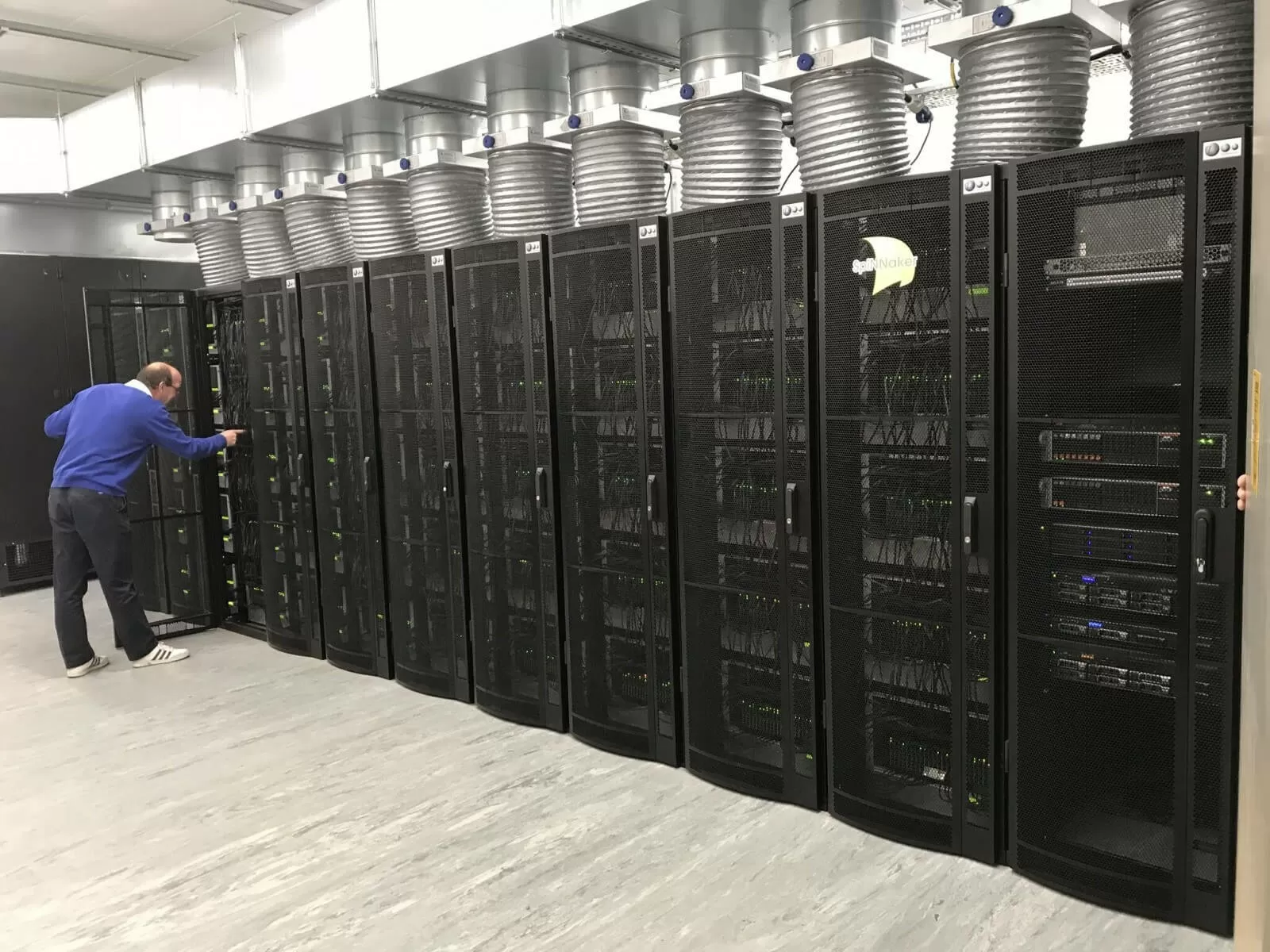Forward-looking: We're used to hearing about supercomputers such as IBM's 200-petaflop Summit machine, but the million-processor-core 'Spiking Neural Network Architecture' mahcine, or 'SpiNNaker,' is a bit different. It's the world's largest neuromorphic supercomputer, designed to copy the workings of the human brain and unlock its secrets, and it's been switched on for the first time.
Built by the University of Manchester's School of Computer Science, it took 12 years and $19.5 million to complete the project, which had its one-millionth processor core fitted last week. SpiNNaker is capable of performing 200 million million actions per second, with each chip containing 100 million moving parts.
The machine can model more biological neurons in real time than any other computer in the world. These neurons are basic brain cells present in the nervous system that communicate primarily by emitting 'spikes' of pure electro-chemical energy.
SpiNNaker works by sending billions of small amounts of information simultaneously to thousands of different destinations, thereby mimicking the parallel communication architecture of the brain. This makes it different from traditional computers, which send large amounts of data from one point to another via a standard network.
"SpiNNaker completely re-thinks the way conventional computers work. We've essentially created a machine that works more like a brain than a traditional computer, which is extremely exciting," said Steve Furber, Professor of Computer Engineering.
"The ultimate objective for the project has always been a million cores in a single computer for real-time brain modeling applications, and we have now achieved it, which is fantastic."
SpiNNaker brings the creators' ultimate aim of building a model of a billion biological neurons in real time a step closer. The neuromorphic supercomputer will run large-scale real-time simulations of different regions of the brain, including the Basal Ganglia, which is an area affected by Parkinson's disease. It's hoped this will lead to neurological breakthroughs in areas such as pharmaceutical testing.
The SpiNNaker has also been used power a robot called the SpOmnibot, which can navigate the real-world by identifying objects and moving toward or ignoring them.
"Neuroscientists can now use SpiNNaker to help unlock some of the secrets of how the human brain works by running unprecedentedly large-scale simulations. It also works as real-time neural simulator that allows roboticists to design large-scale neural networks into mobile robots so they can walk, talk and move with flexibility and low power," added Professor Furber.
